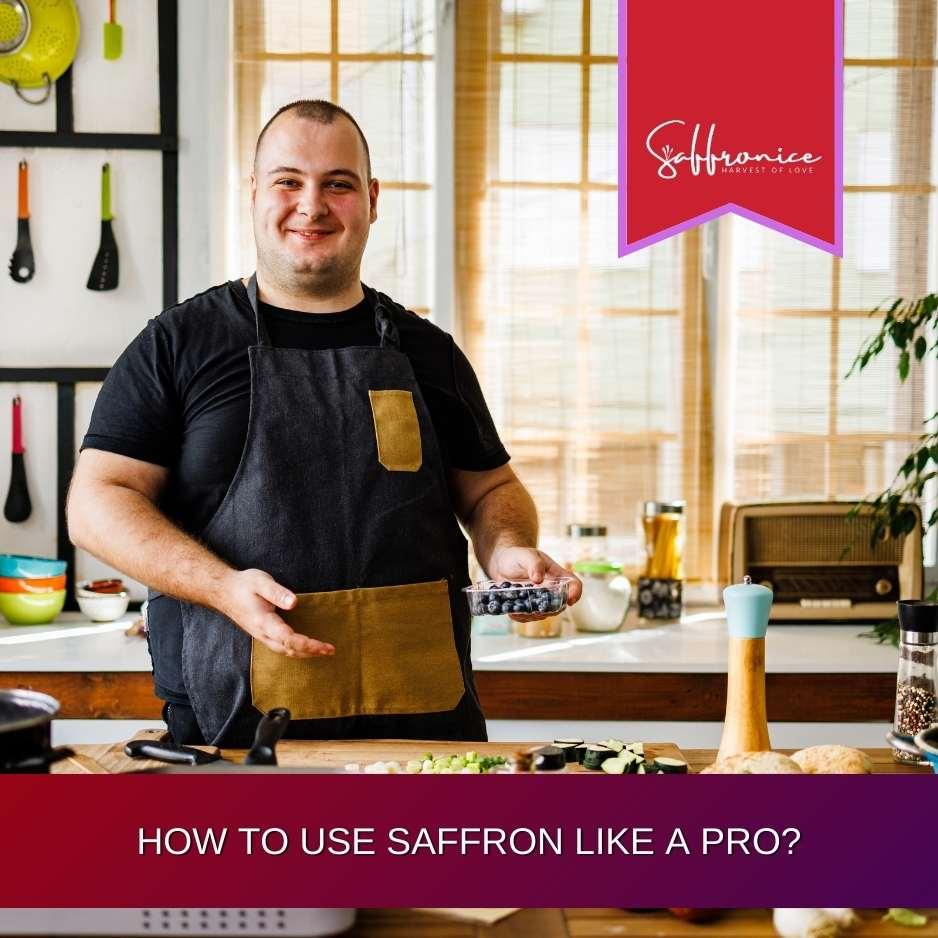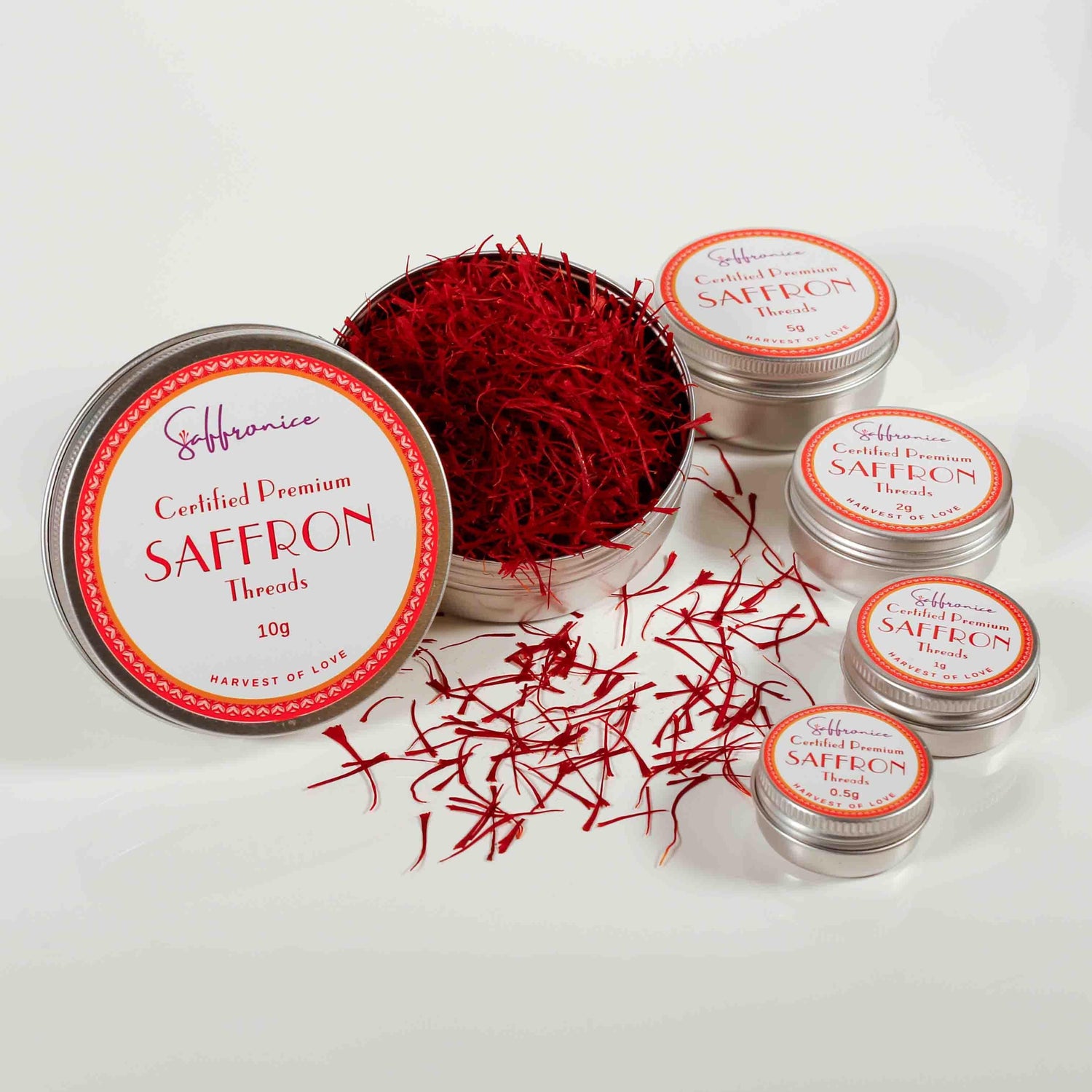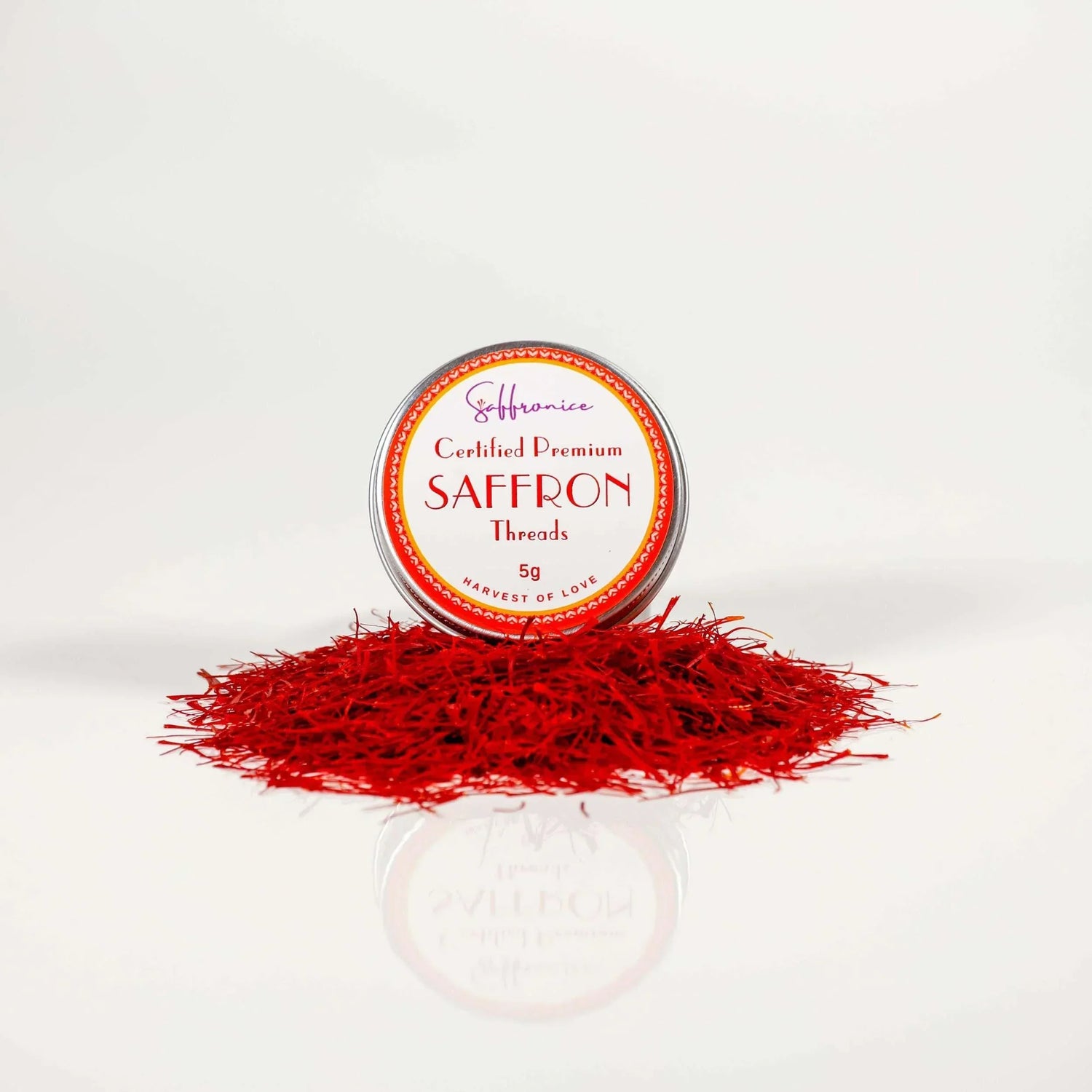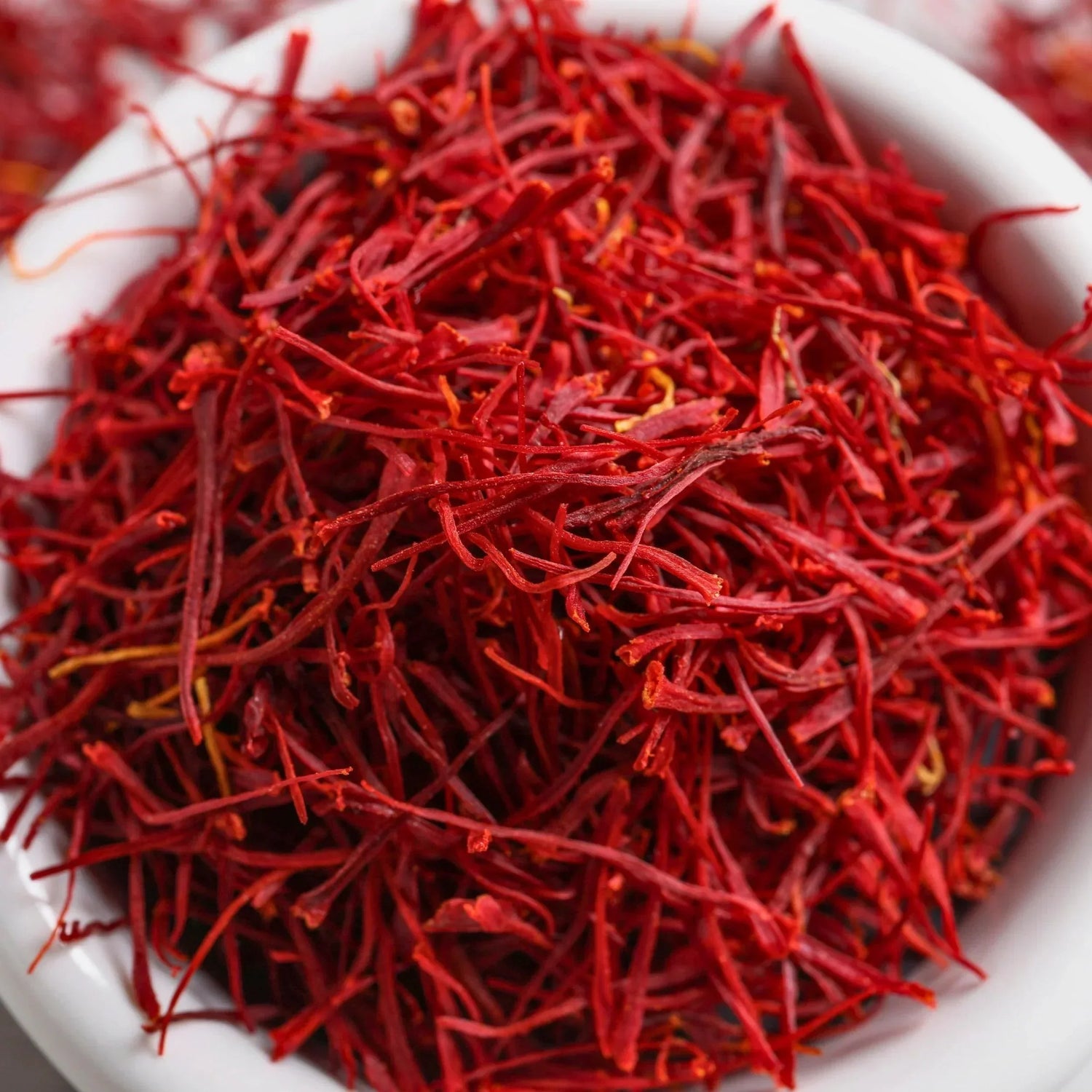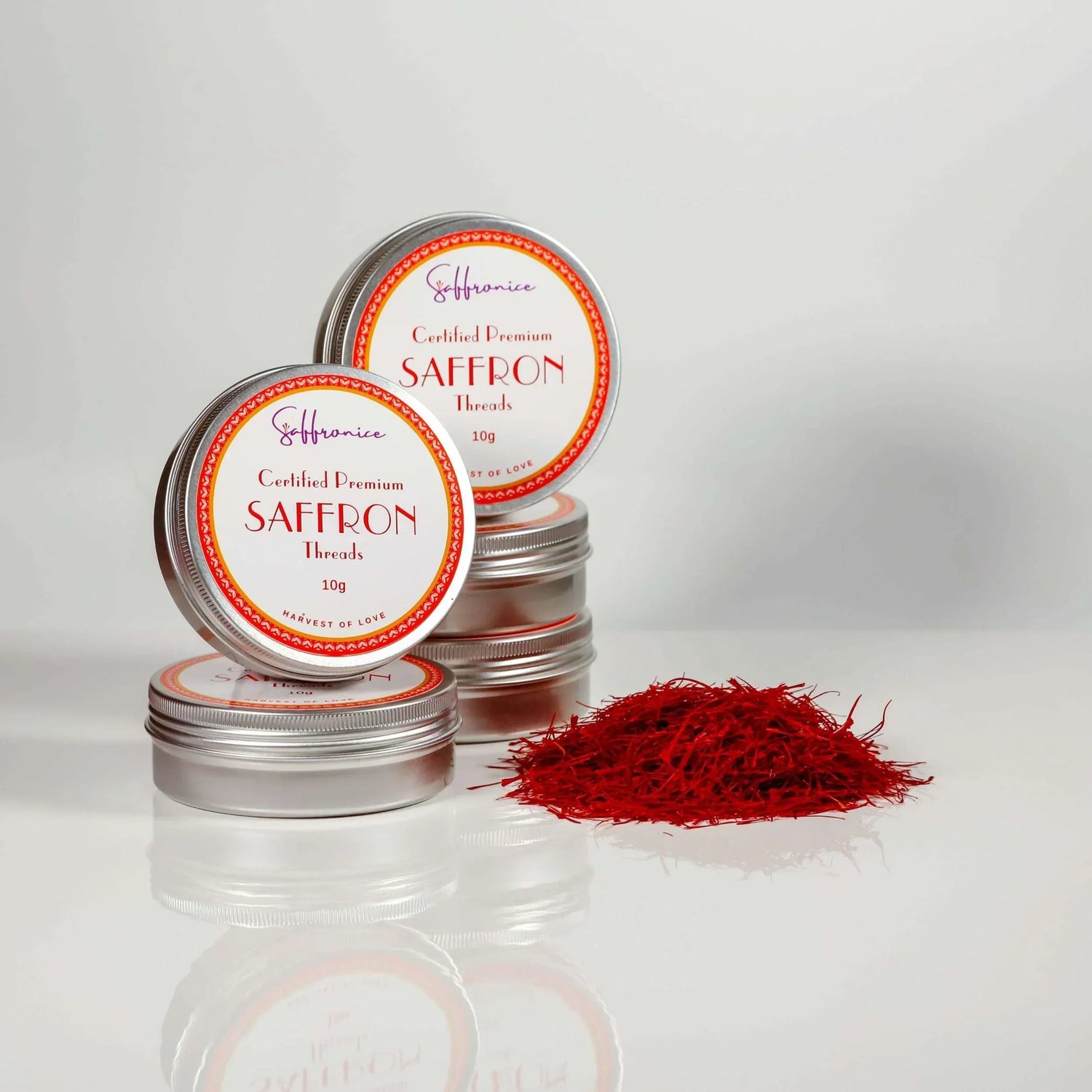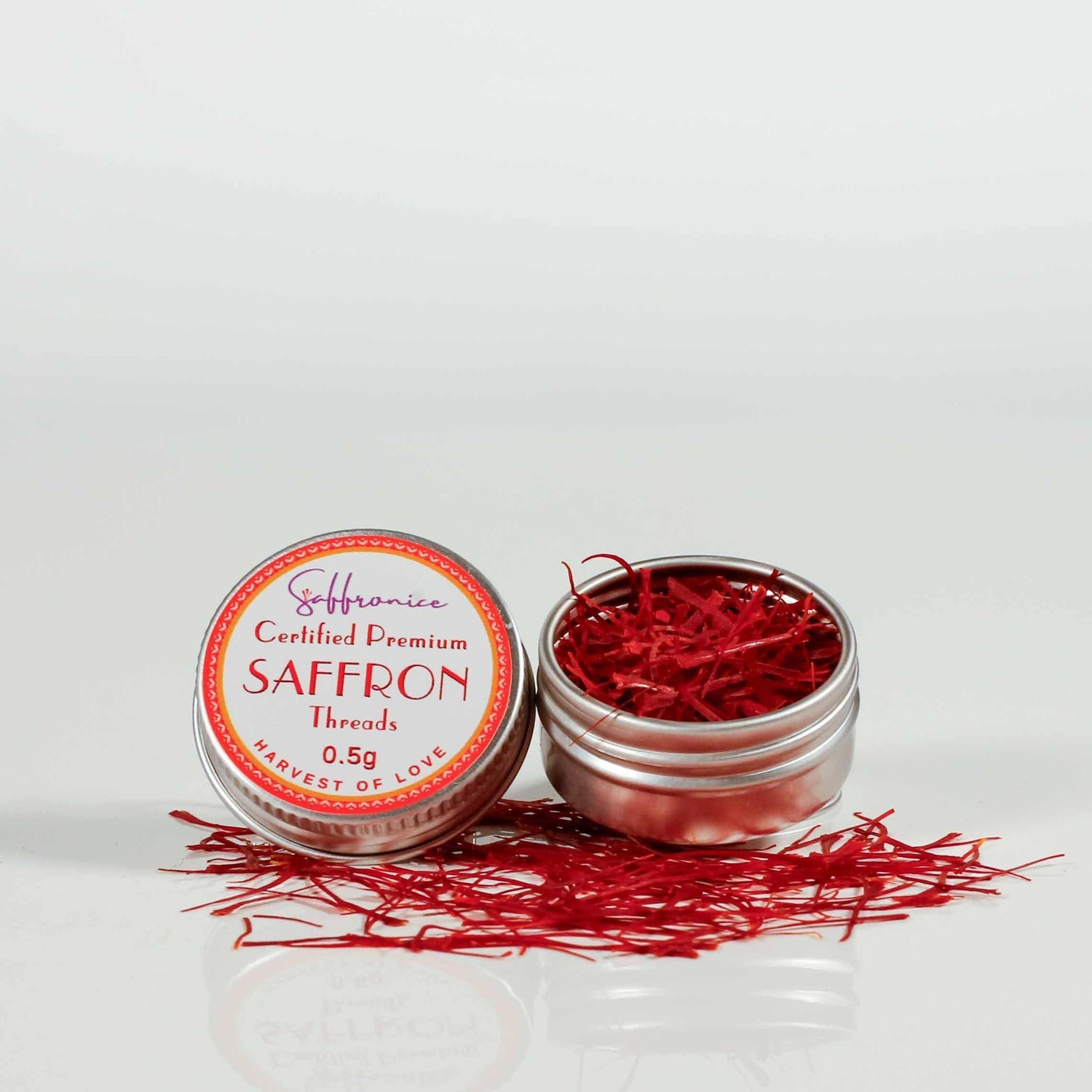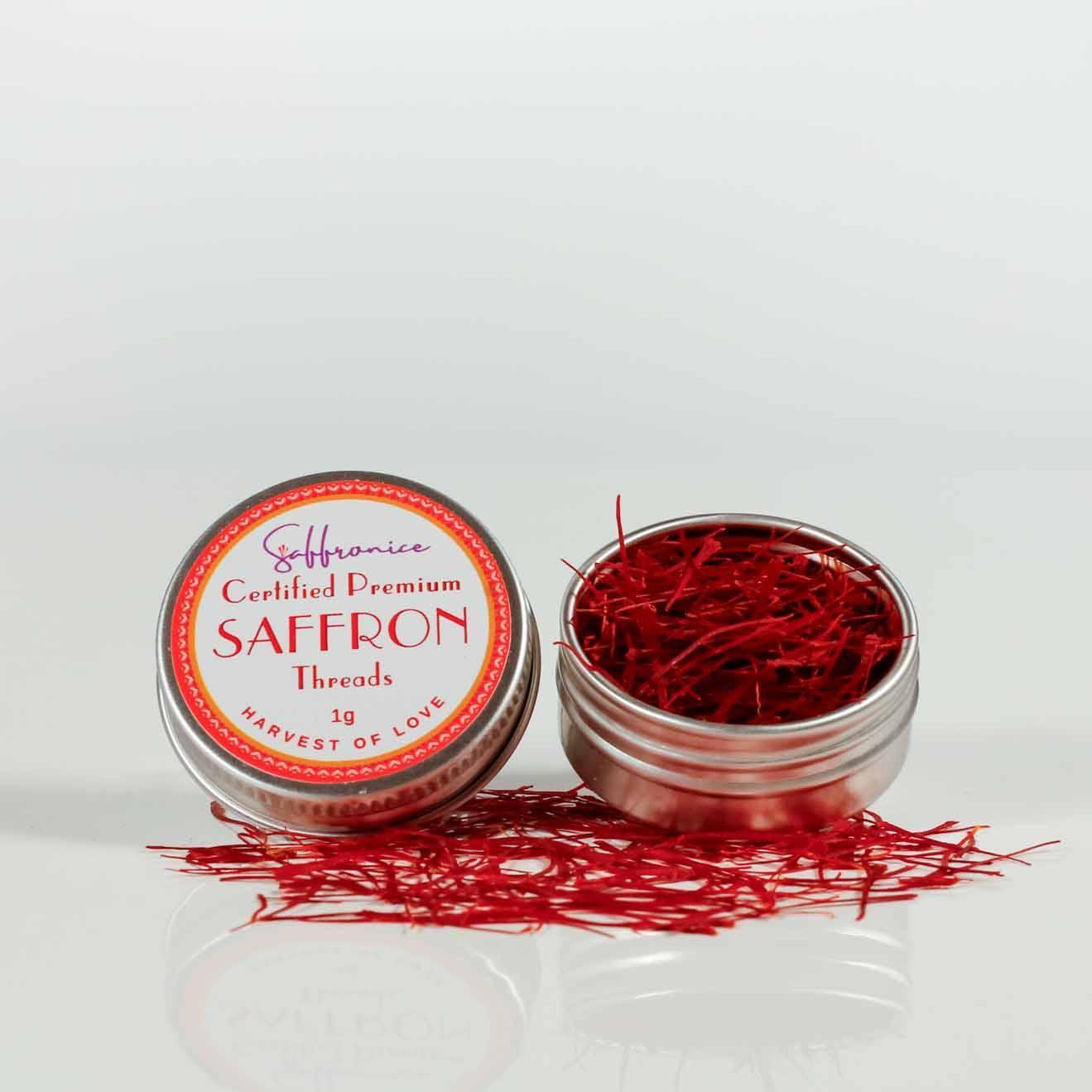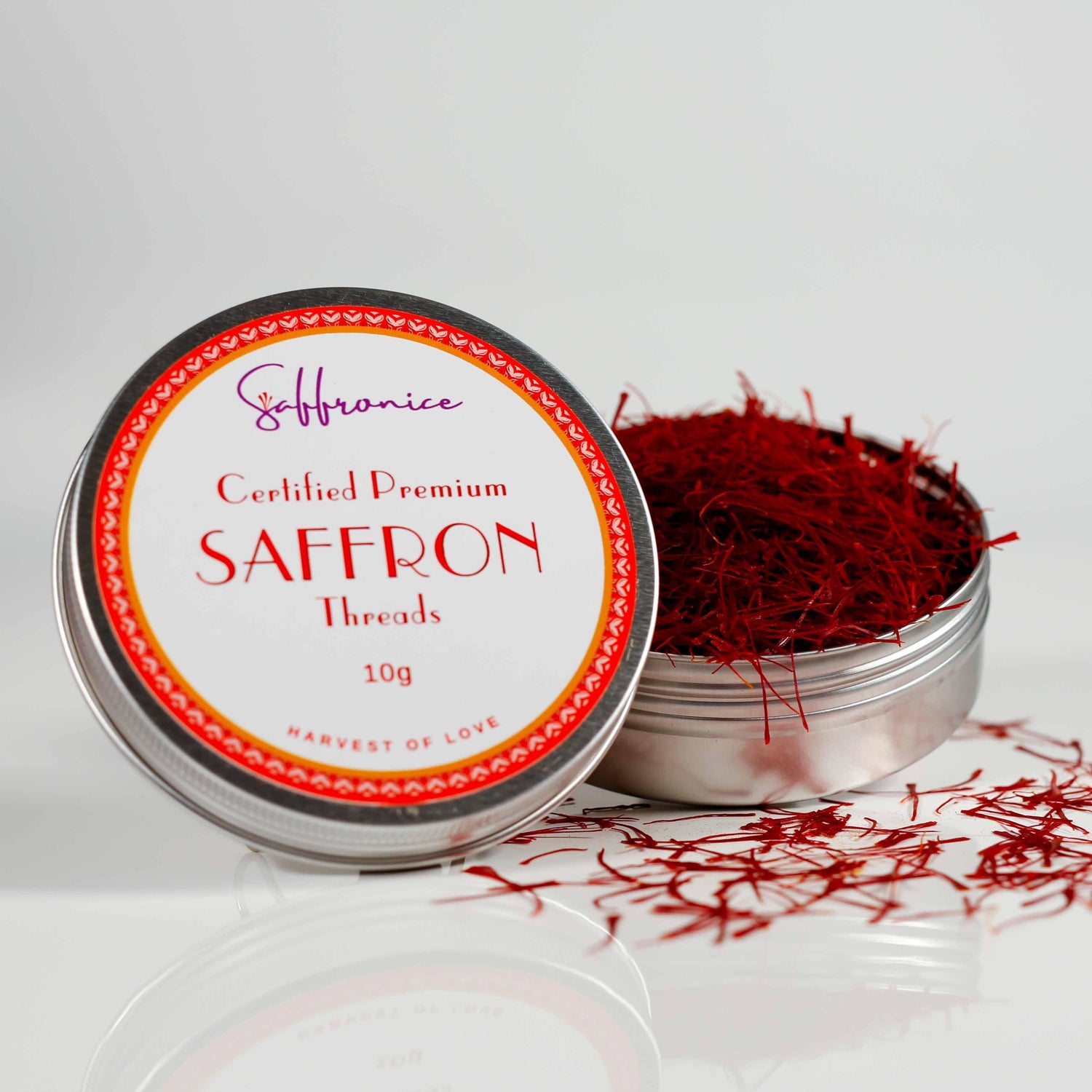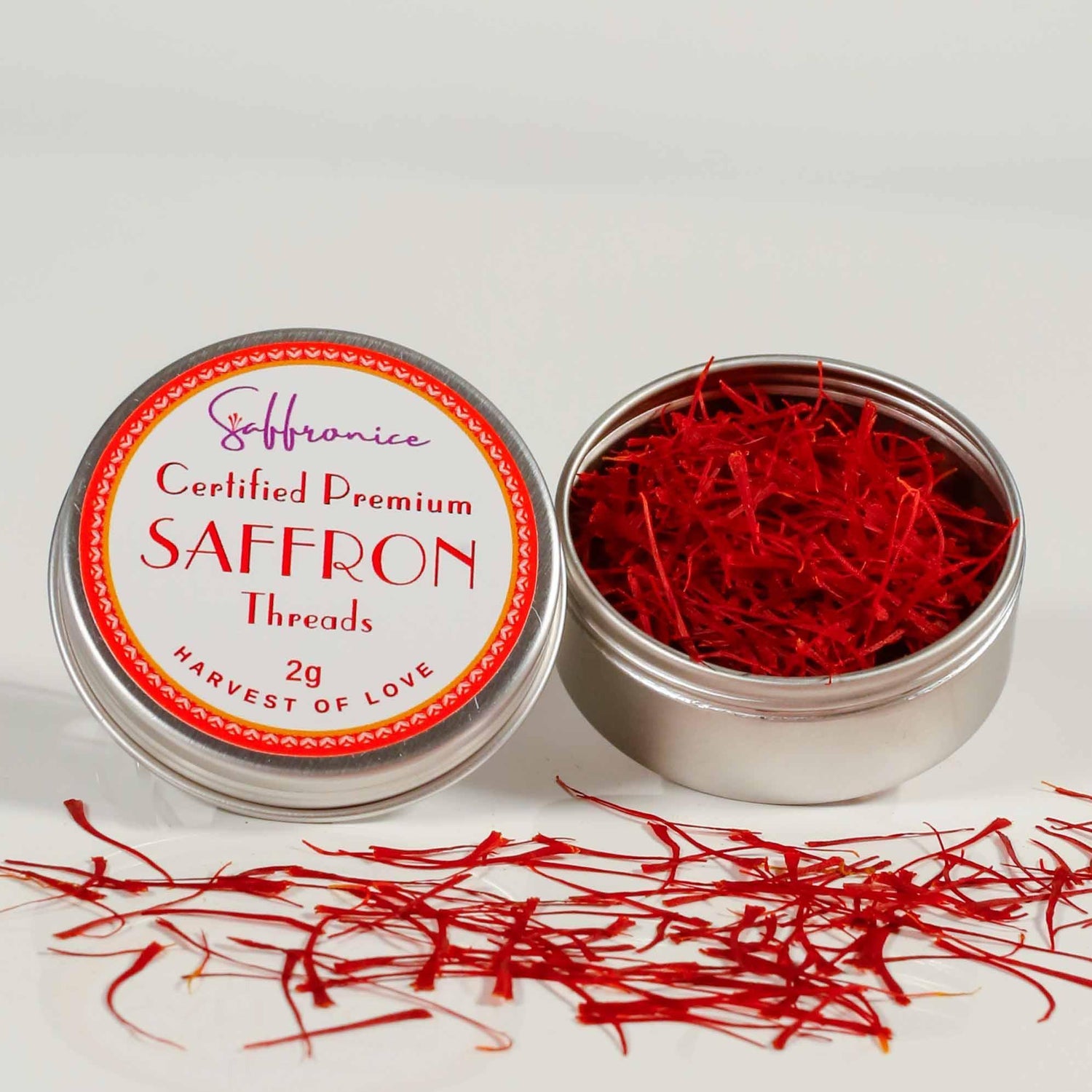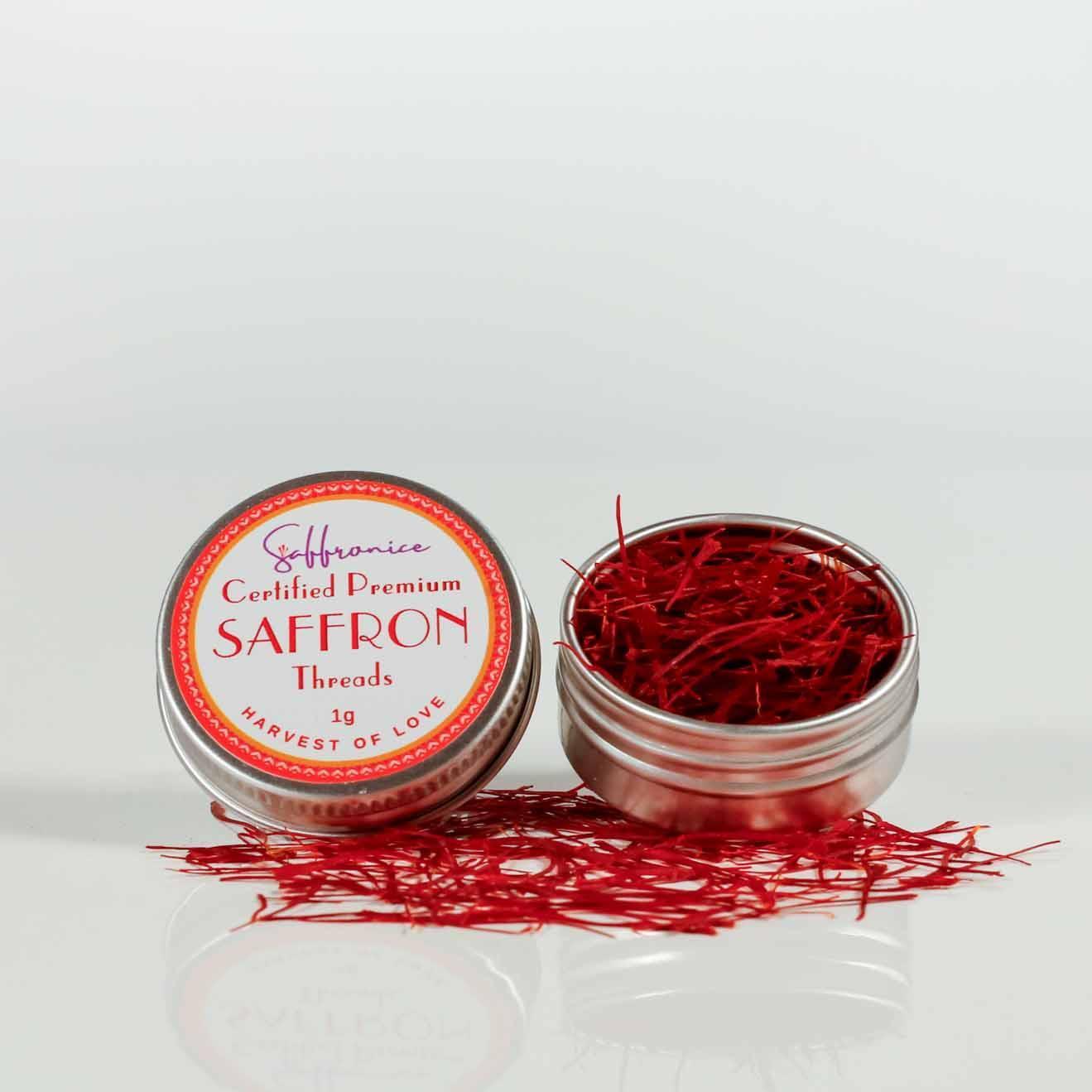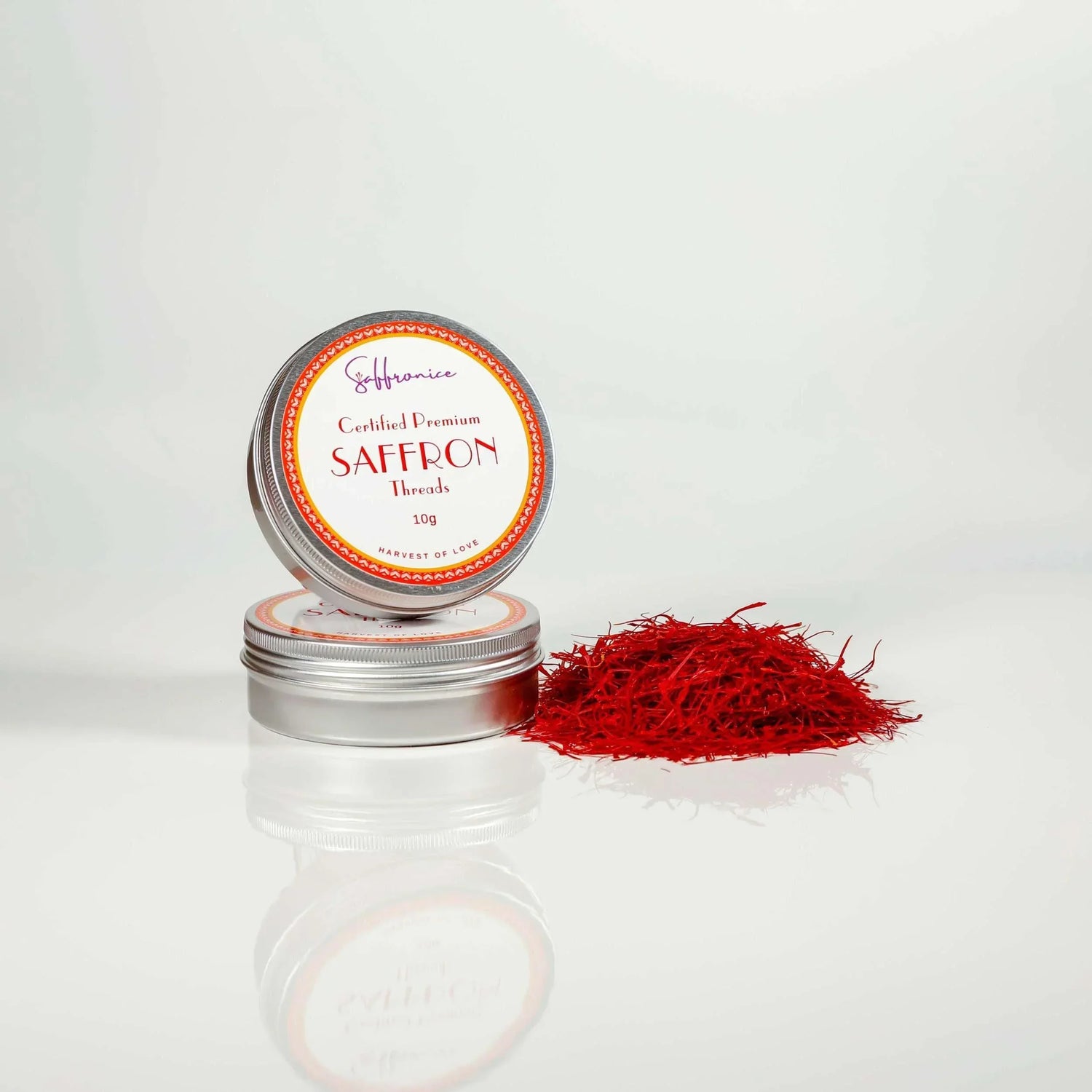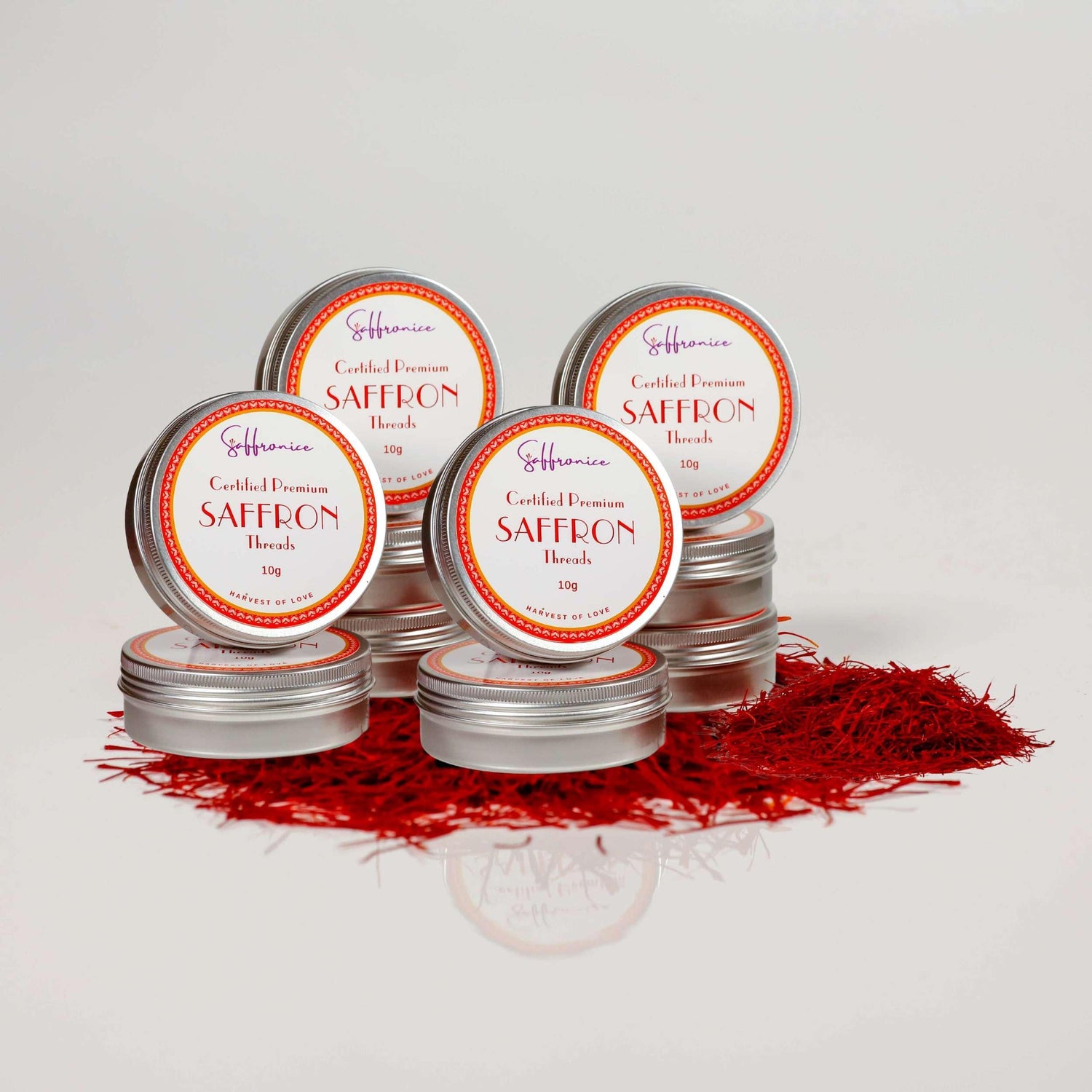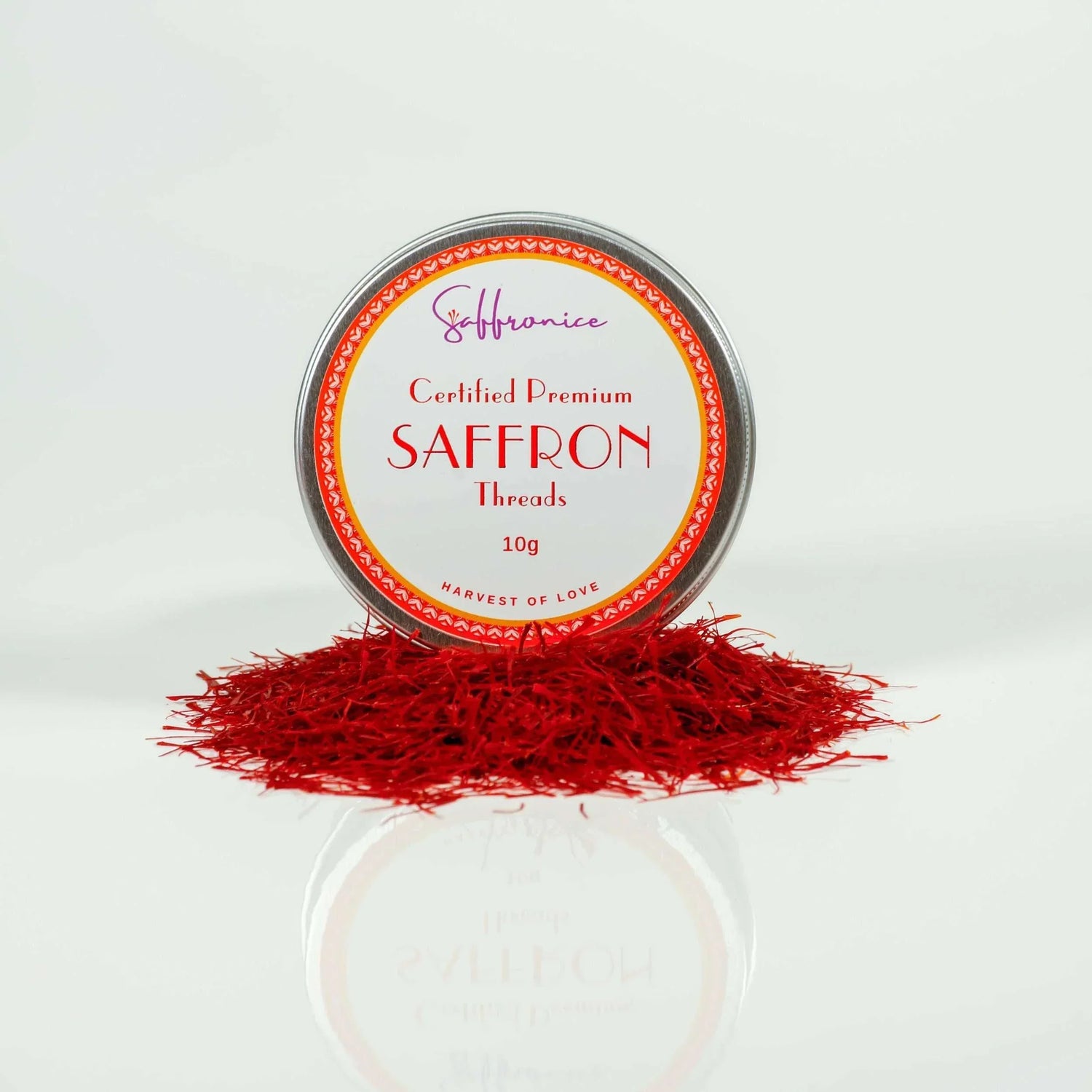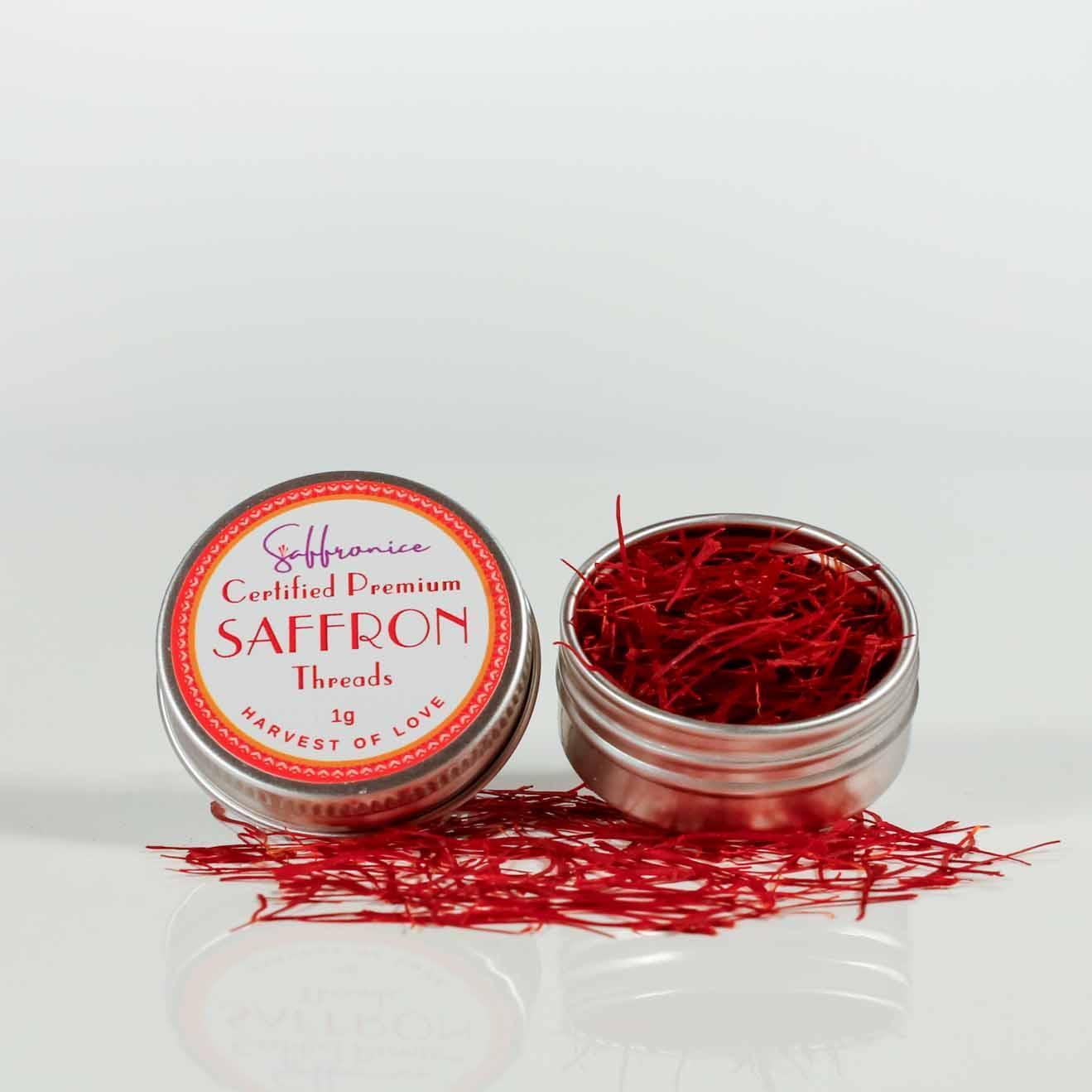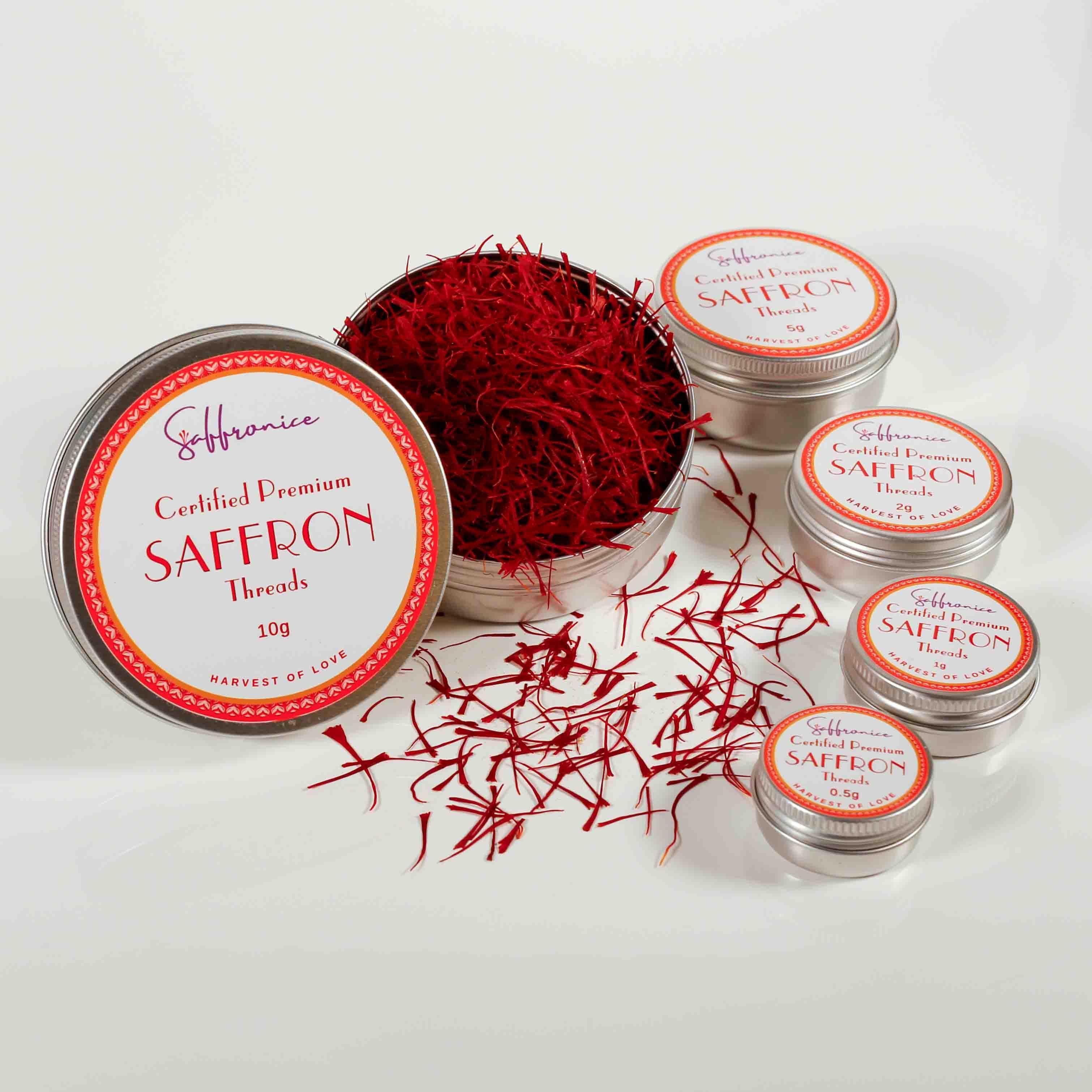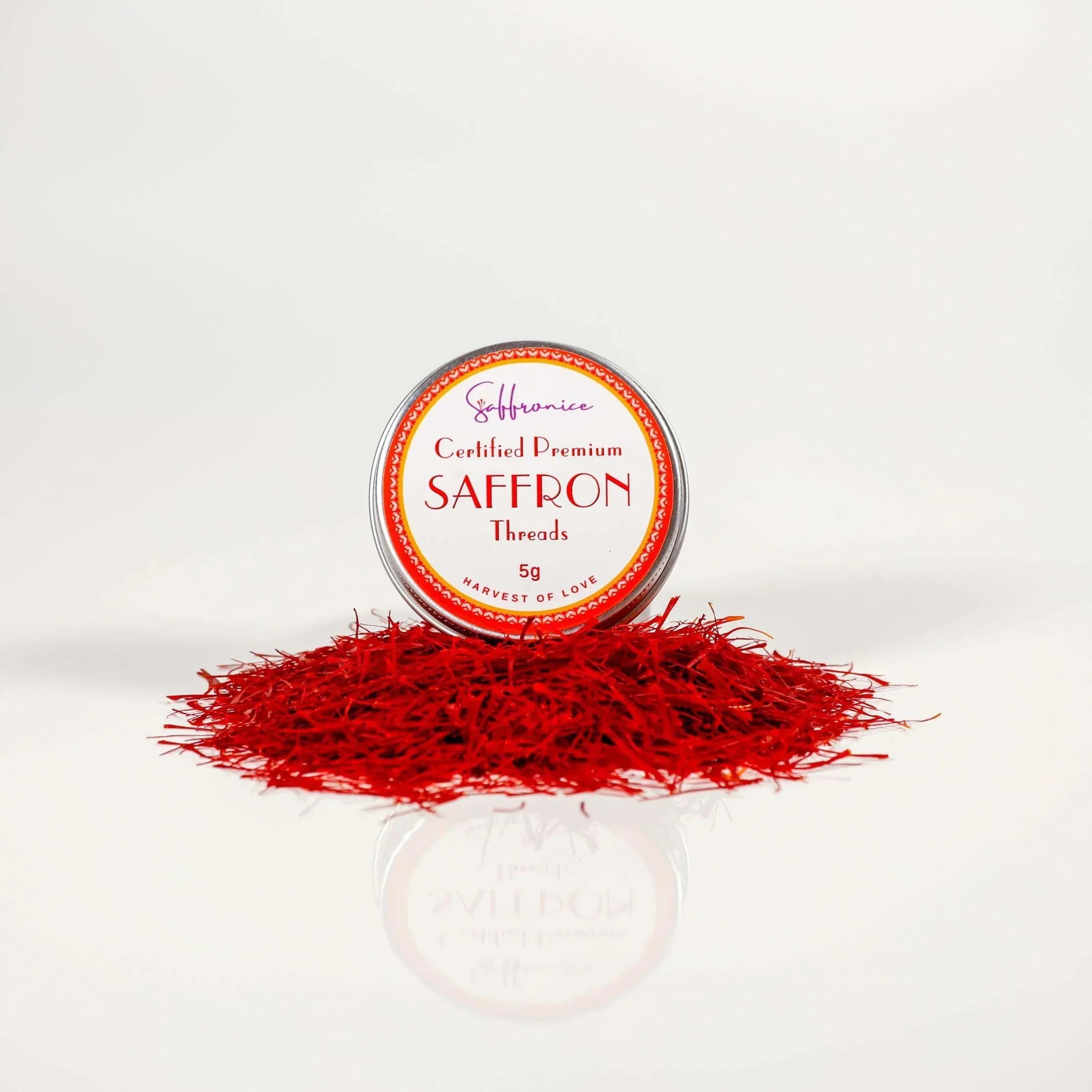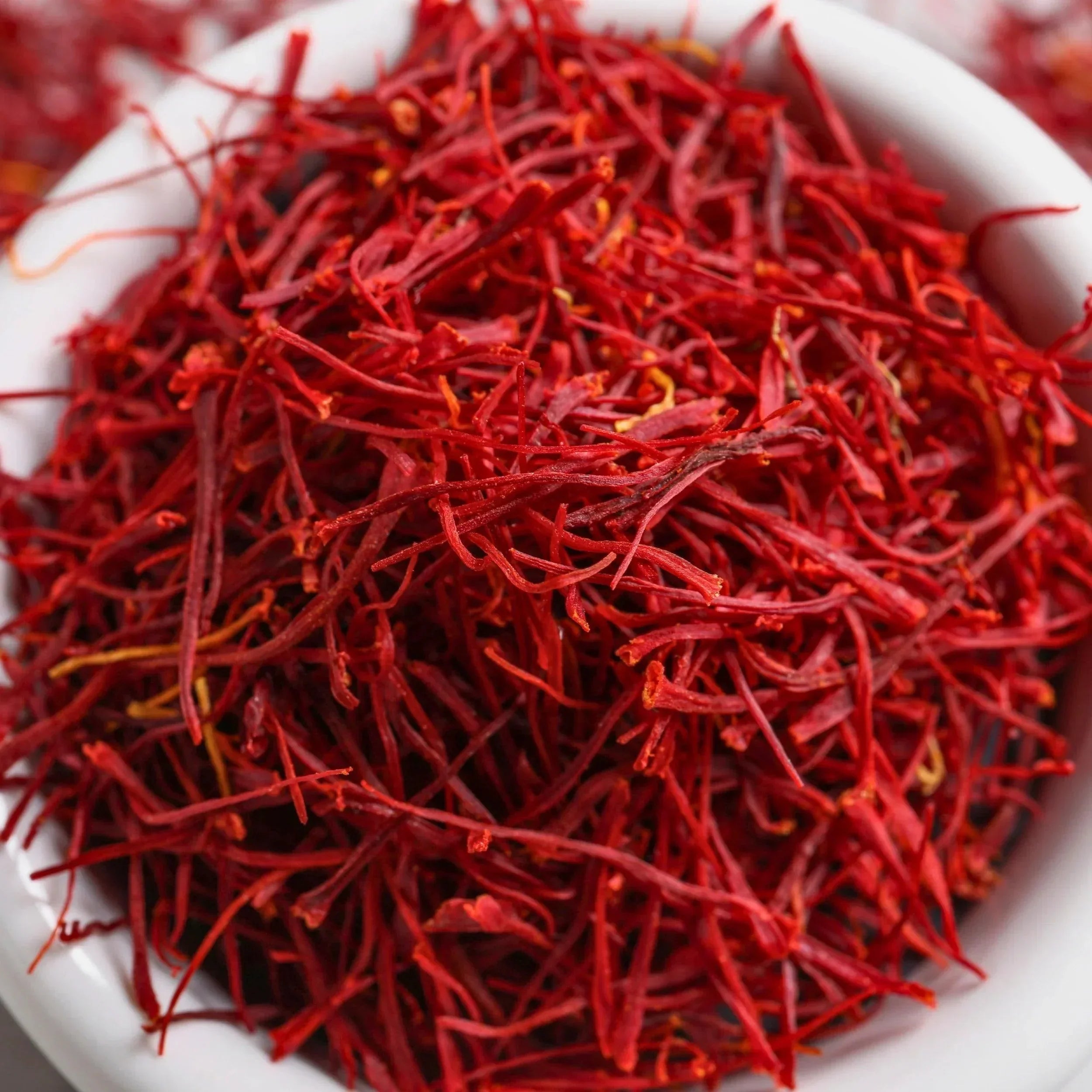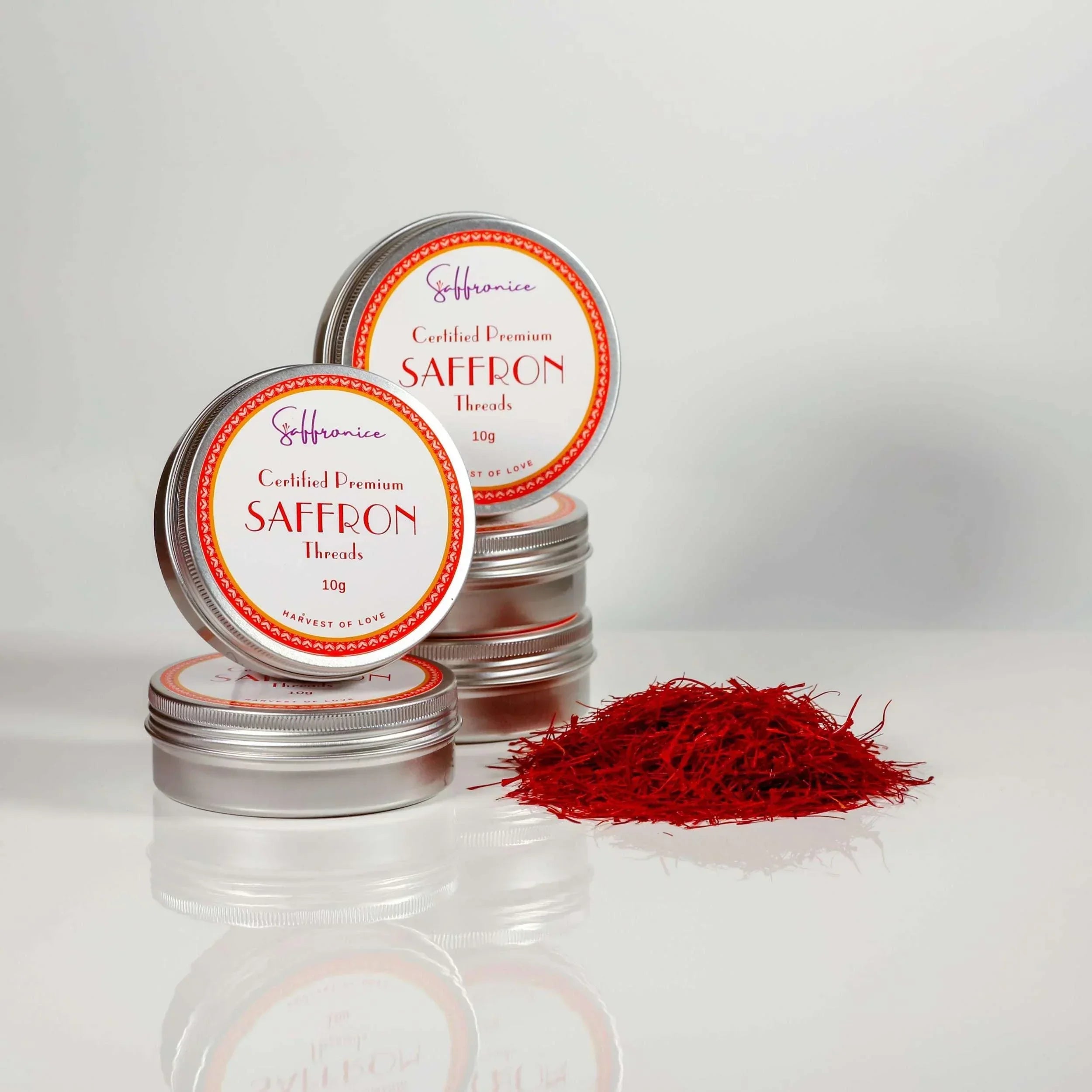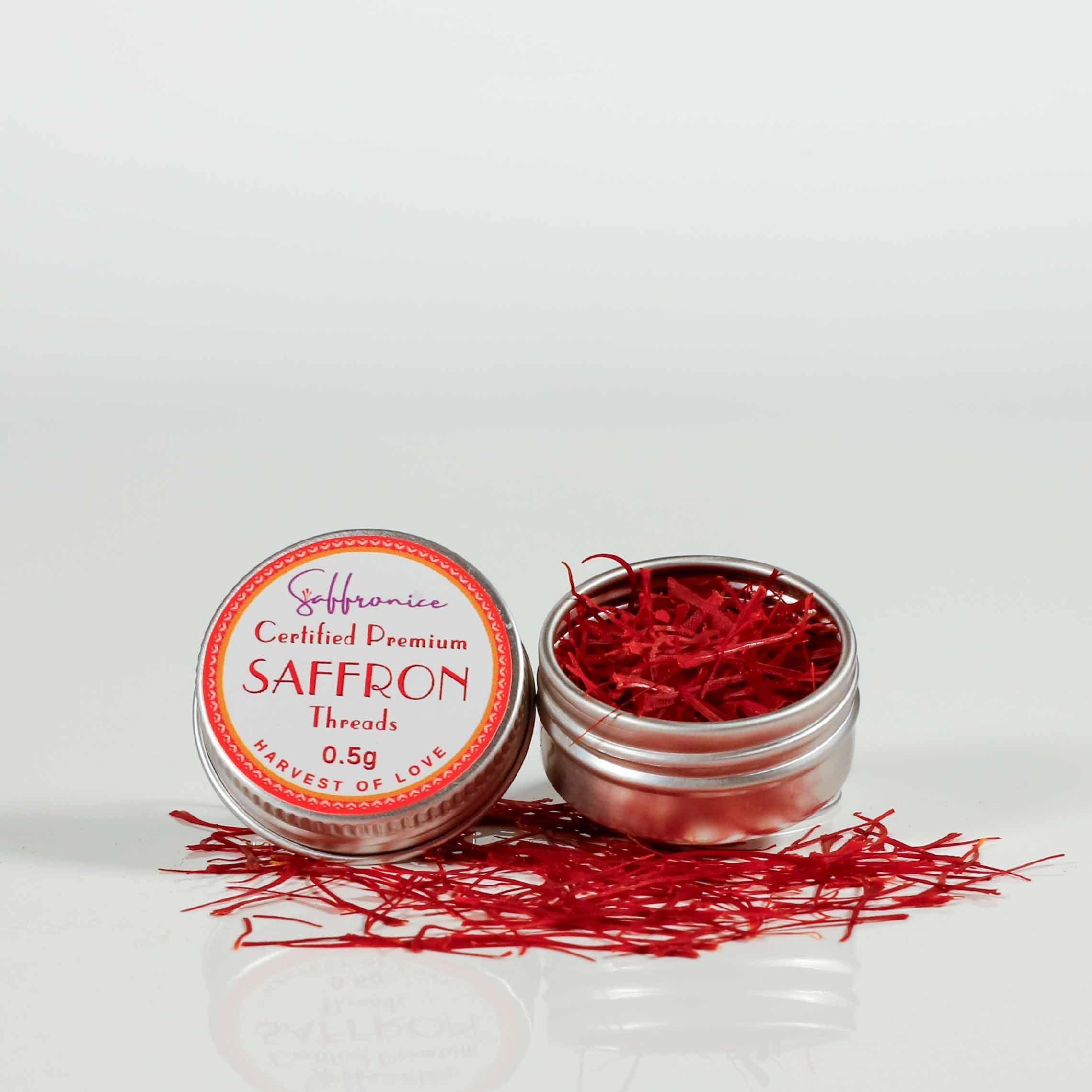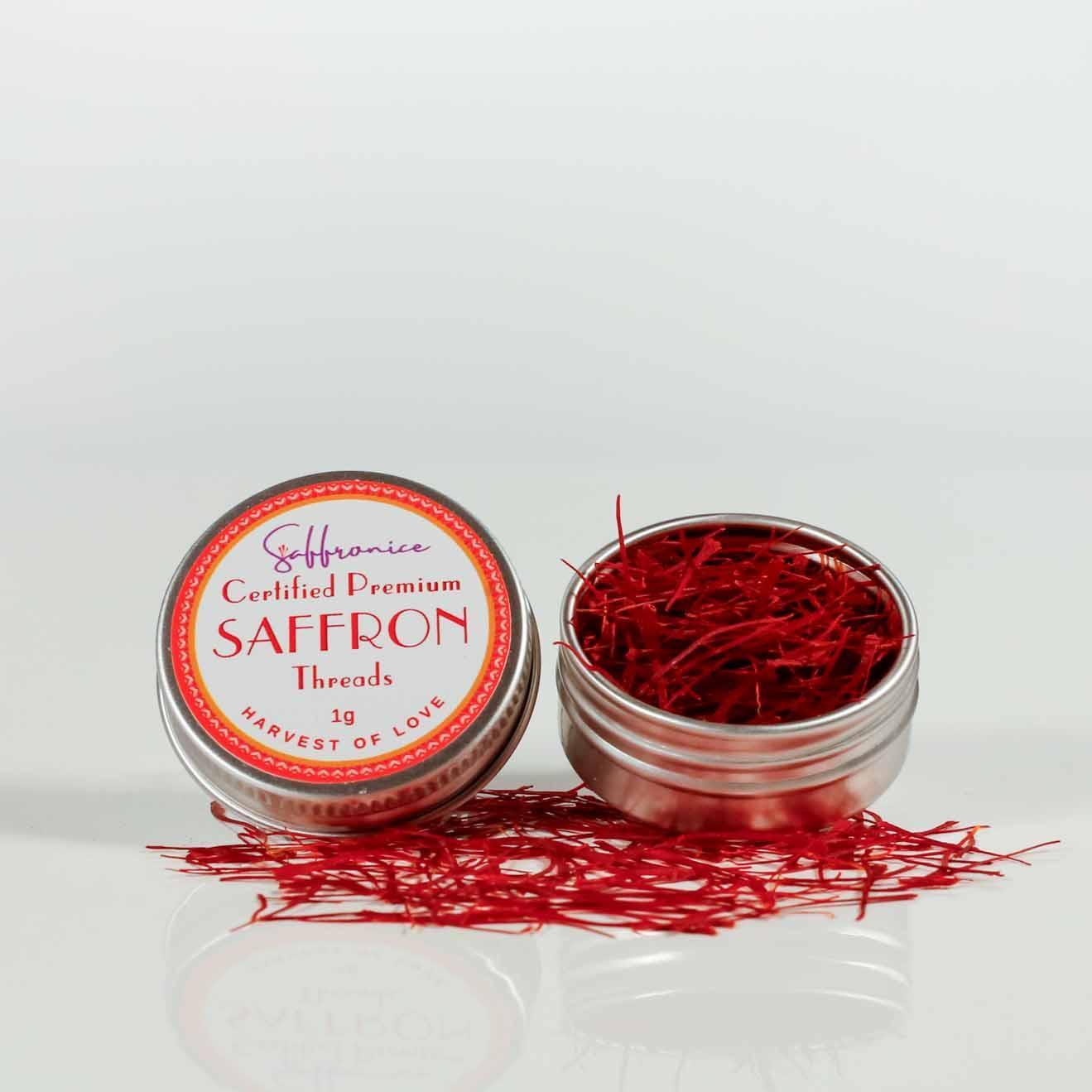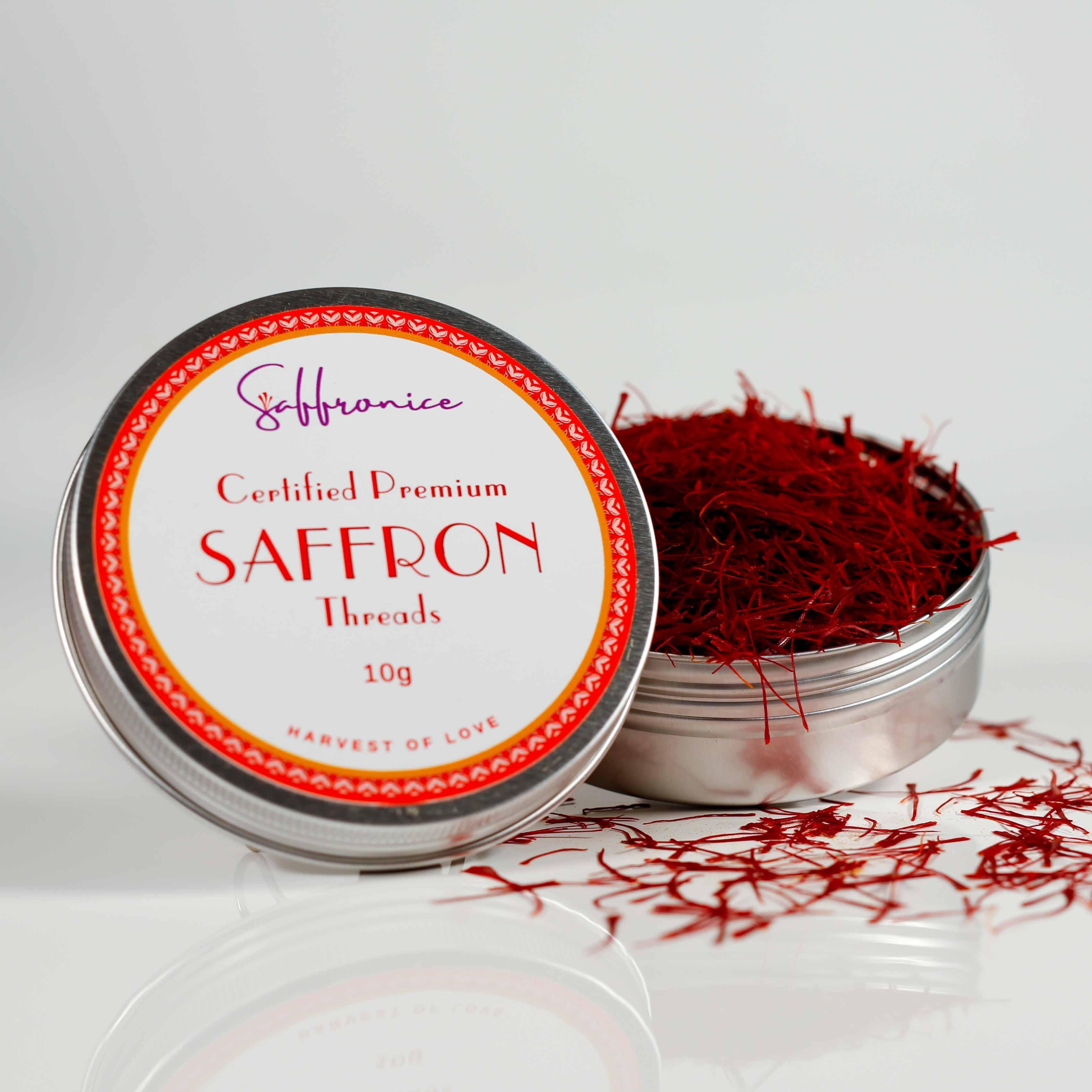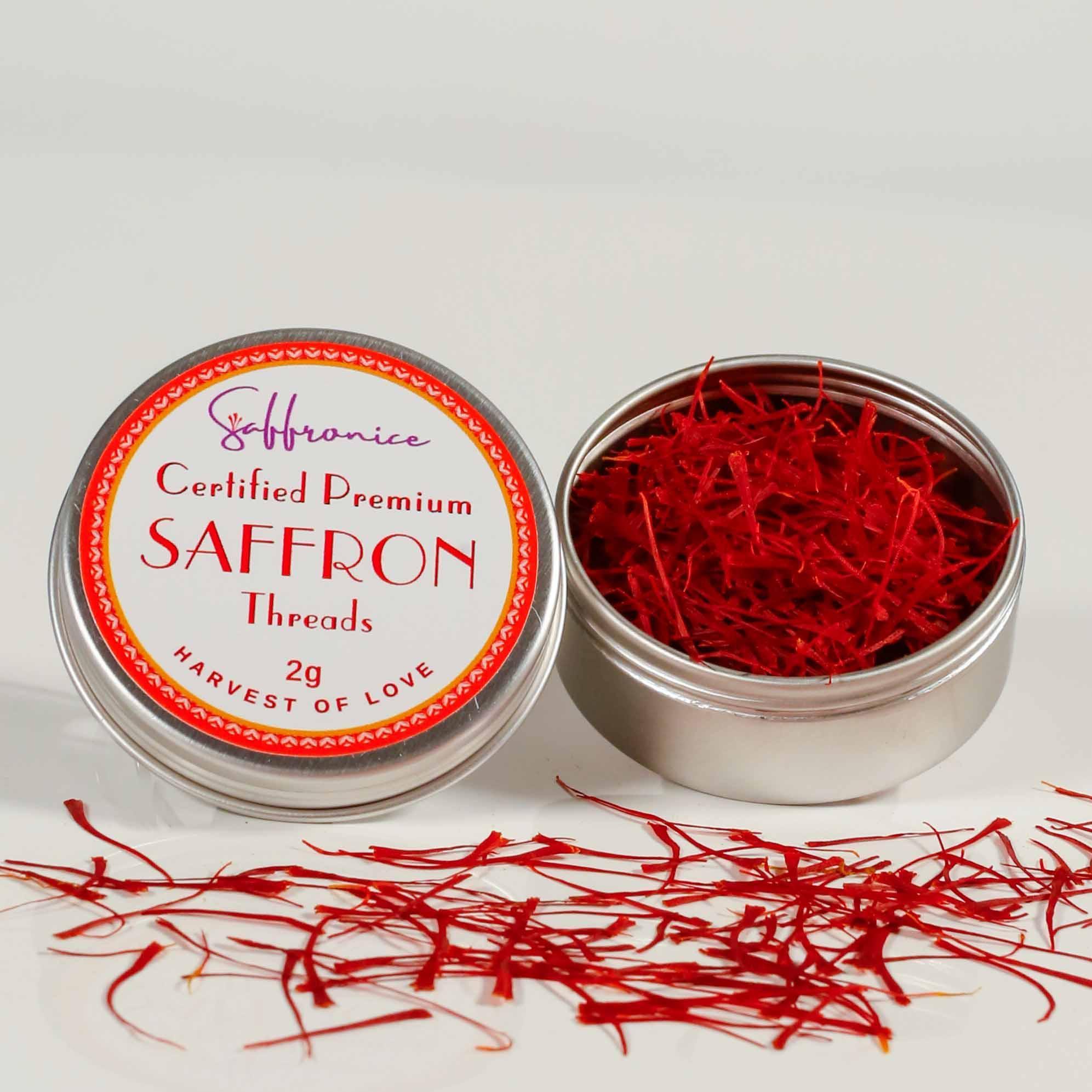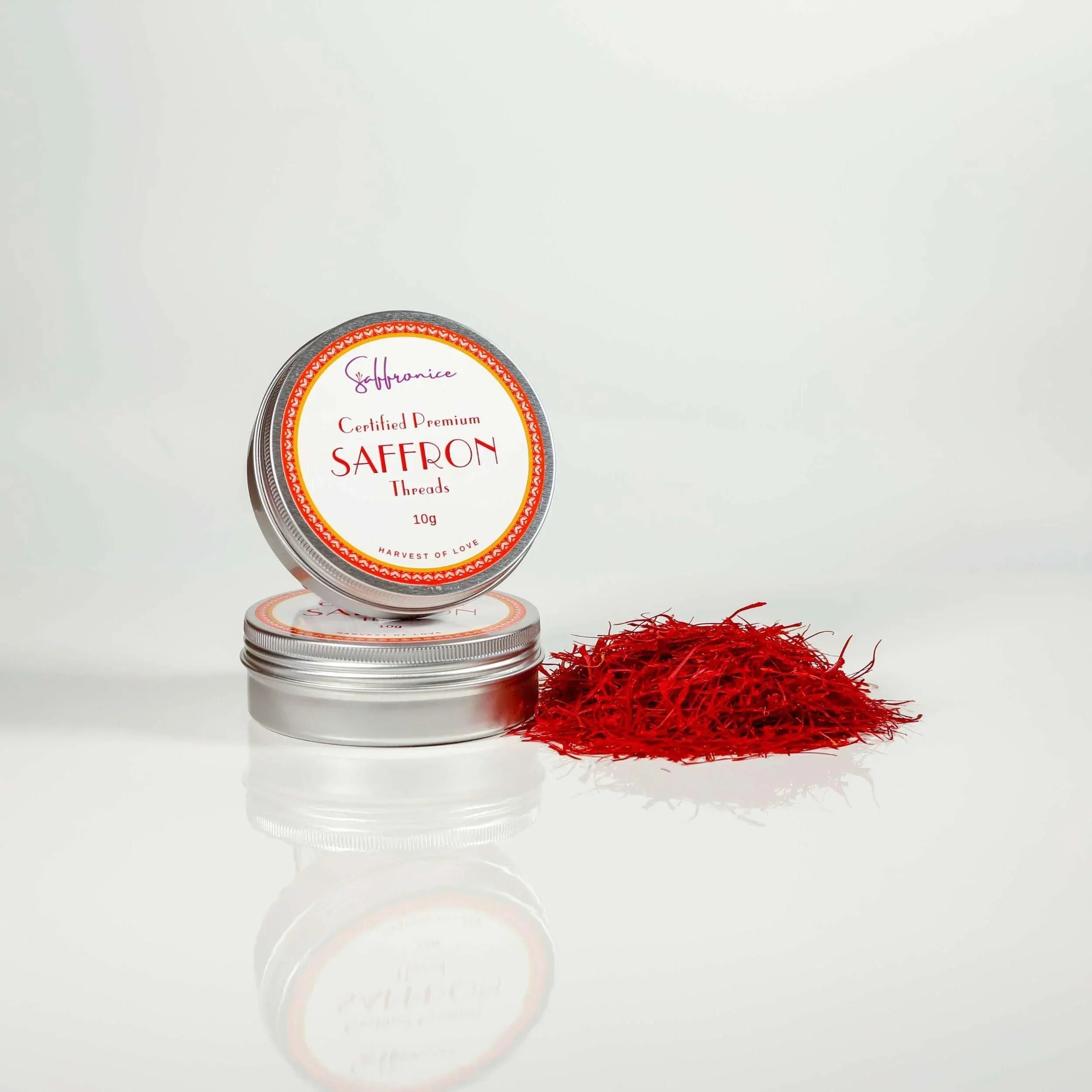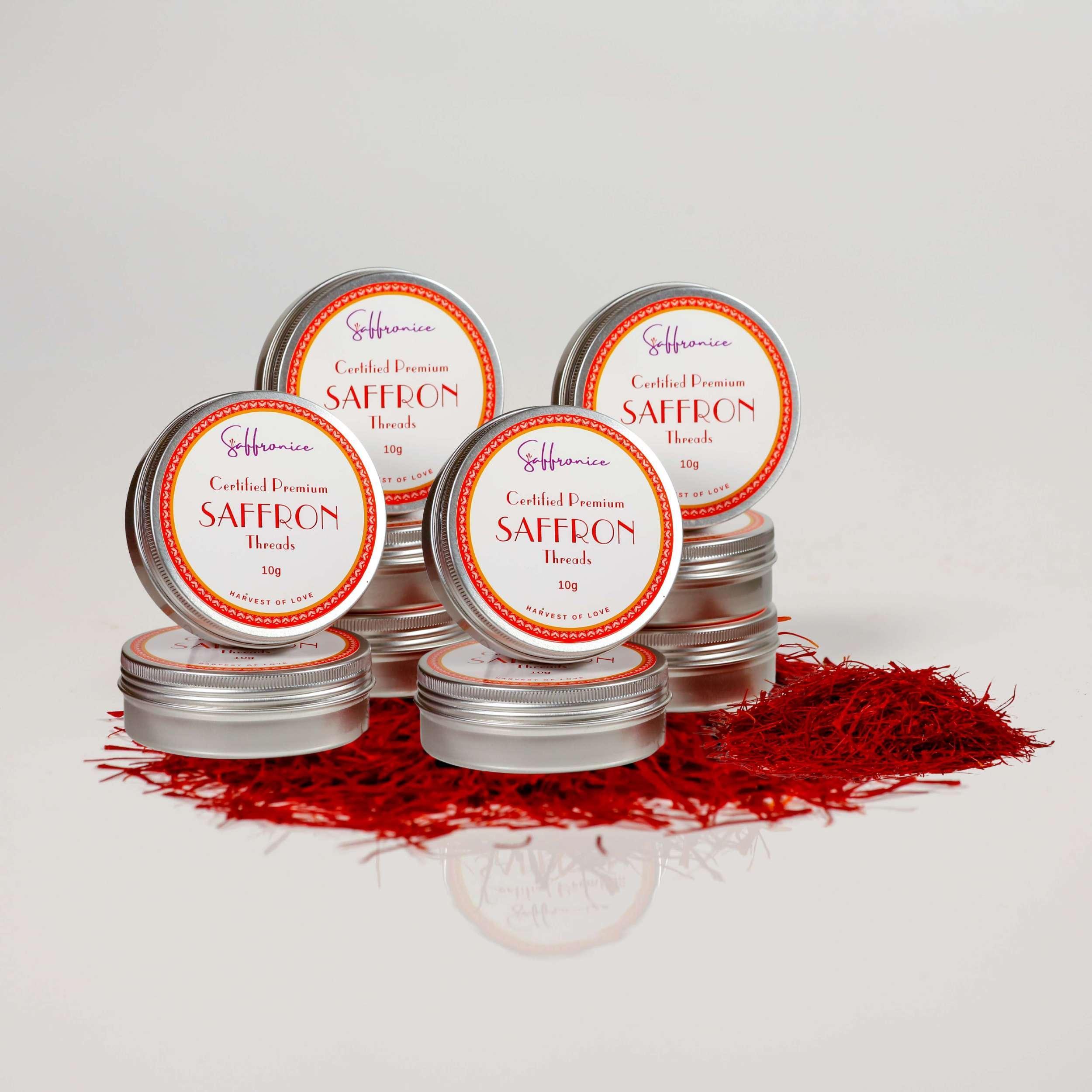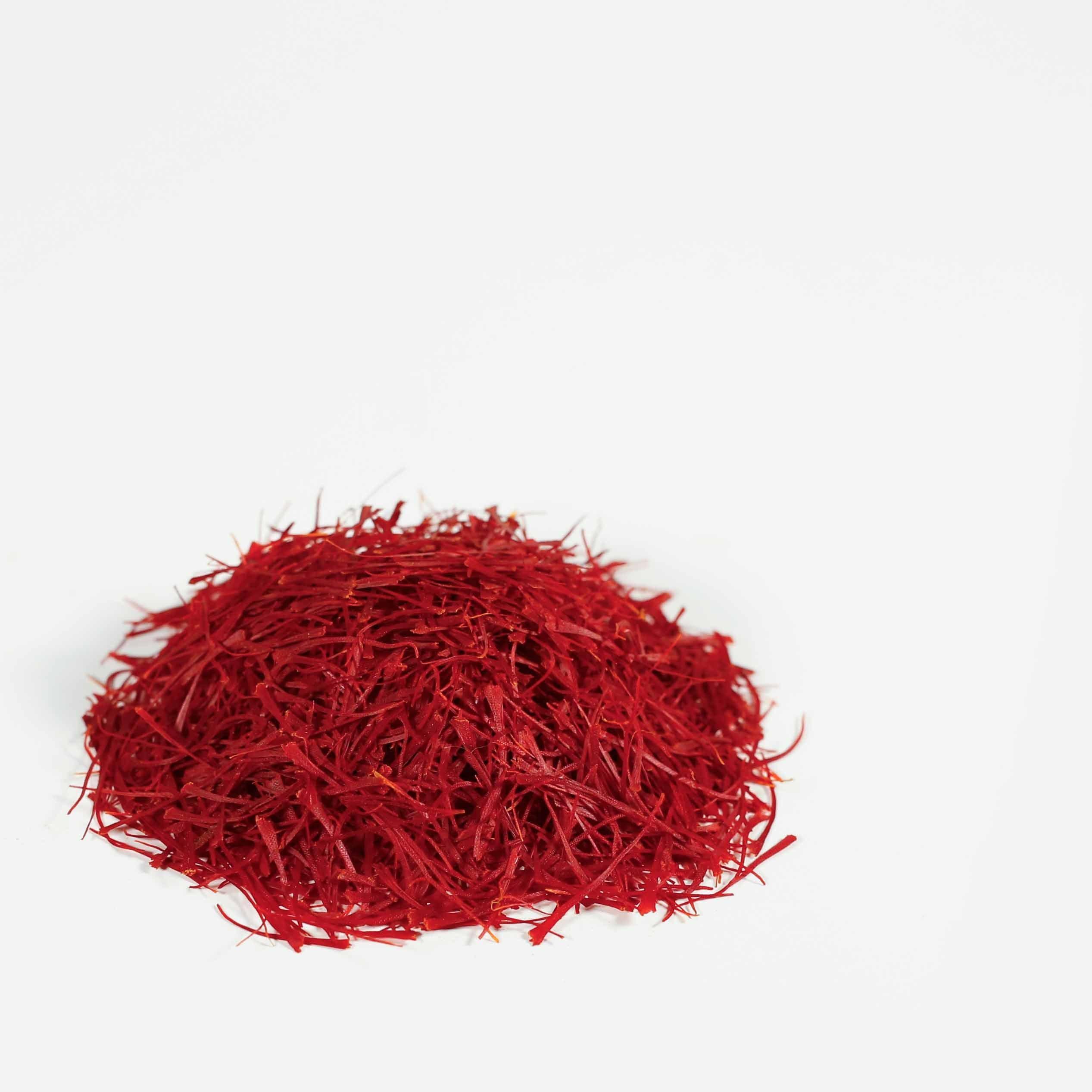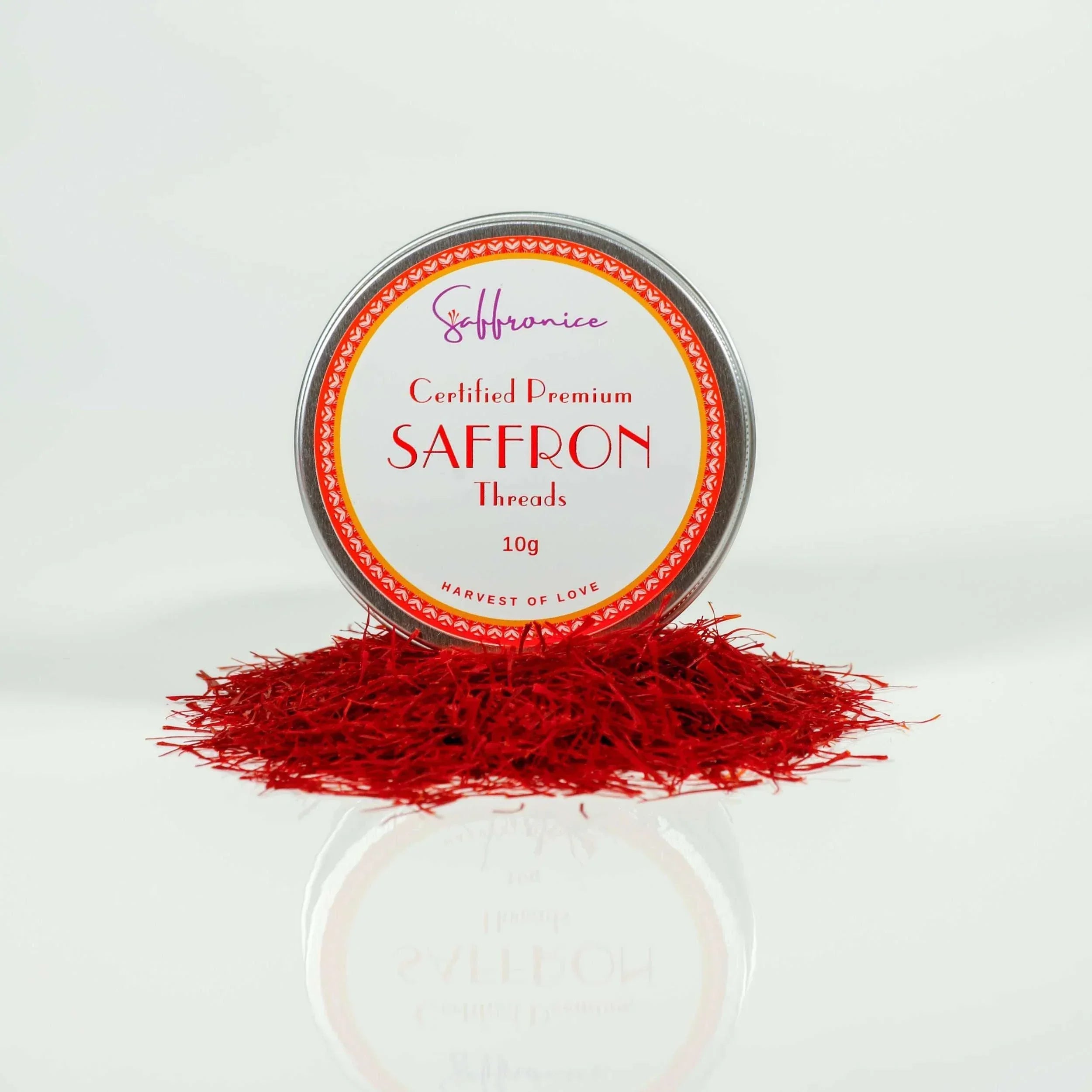Saffron, often called the "golden spice," is highly valued in cooking and for its health benefits. It comes from the dried stigmas of the autumn crocus flower and is known for its bright colour, unique smell, and many advantages.
In this guide on how to use saffron, you'll find expert advice on getting the most out of its taste and health benefits. Discover how to choose the best saffron, learn infusion methods, and explore delicious recipes that highlight its versatility. Whether you're an experienced chef or just starting out in the kitchen, these tips will enhance your cooking experiences.

Understanding Saffron
Different forms of saffron bring unique qualities to your culinary and health routines. Pure threads are the most traditional form, often used in cooking to release their vibrant colour and aroma slowly. They are ideal for dishes like paella and risotto. Nano extracts offer a more modern approach, providing concentrated saffron in a powdered form that's perfect for supplements or precise flavouring in recipes. Liquid concentrates blend easily into sauces and beverages, offering convenience without sacrificing the rich saffron essence.
The source of this exquisite spice is the Crocus sativus, commonly known as the saffron crocus. This delicate purple flower blooms in autumn and produces bright red stigmas, which are meticulously harvested by hand. It takes around 15,000 stigmas to yield just one ounce of saffron, making it the most expensive spice by weight. The crocus thrives in areas like Iran and Spain, contributing to the high quality of saffron available from these regions.

Culinary Uses of Saffron
Cooking with saffron can transform your dishes, adding a unique depth of flavour and vibrant colour. When it comes to saffron-infused rice, recipes like Saffron Rice and Tahdig stand out. To use saffron in these dishes:
1. Saffron Rice
- Soak a pinch of saffron threads (about 30-50mg) in warm water or milk for at least 10 minutes.
- Add the saffron infusion to your rice before cooking.
- This enhances both the aroma and the golden hue of the rice.
2. Tahdig
- Mix saffron-infused water with yogurt and a bit of oil, then spread this mixture at the bottom of your pot before adding rice.
- Cook as usual; the result is a crispy, flavorful crust that’s integral to Persian cuisine.
Saffron also excels in saffron-infused stews, enriching them with its distinct taste. For stews:
- Preparation: Crush a few saffron threads and steep them in hot water.
- Incorporation: Add the saffron liquid to your stew near the end of cooking to preserve its delicate flavour.
Experimenting with these techniques allows you to answer questions like how do I use saffron or how can I use saffron effectively in your kitchen adventures.

Popular Saffron Recipes You Must Try
Saffron's unique flavour and vibrant colour make it a key ingredient in several classic dishes. Here are some must-try recipes:
Key Recipes
- Risotto alla Milanese: A luxurious Italian dish where saffron threads are infused into creamy risotto, giving it a rich, golden hue and distinctive taste.
- Arroz con Perdiz: This Spanish delicacy pairs saffron-infused rice with tender partridge meat, creating a symphony of flavours enhanced by the aromatic spice.
- Bourride: A traditional fish stew from Provence, Bourride uses saffron to add depth and complexity to its broth, making it a standout comfort food.
Sweet Treats
- Gulab Jamun: These Indian milk-based sweets are elevated with a touch of saffron, adding an exotic flair to their syrupy sweetness.
- Halwa: Semolina pudding enriched with nuts and saffron, Halwa is a delightful dessert enjoyed across various cultures for its warm, comforting flavours.
Flavour Enhancement Techniques with Saffron
Using saffron effectively enhances both the flavour and colour of your dishes. The key is to use the right quantity and technique.
Ideal Quantities for Flavour Enhancement
For most recipes, 30-50mg of saffron threads is ideal. This amount typically suffices to impart a noticeable flavour and rich golden hue without overpowering other ingredients.
Best Practices for Toasting and Grinding Saffron
- Toasting: Lightly toast the saffron threads in a dry pan over low heat for a few minutes. This releases more aroma and flavours.
- Grinding: Once toasted, grind the threads into a fine powder using a mortar and pestle. This ensures an even distribution in your dish.
Pairing Suggestions with Other Ingredients
Saffron's unique flavour pairs well with:
- Rice: Enhances dishes like paella or biryani.
- Seafood: Complements fish stews or shrimp risotto.
- Dairy: Elevates desserts like custards and ice creams.
- Spices: Harmonizes with cinnamon, cardamom, and vanilla for complex flavor profiles.
By mastering these techniques, you unlock saffron's full potential in your culinary creations.

Exploring the Health Benefits of Saffron
Saffron, often referred to as "red gold," isn't just a culinary delight but also a powerhouse of health benefits. Studies have shown that saffron can:
- It acts as an antioxidant, helping to neutralise harmful free radicals in the body.
- Improve mood and alleviate symptoms of depression due to its compounds like crocin and safranal.
- Enhance memory and cognitive function, which can be beneficial for those with Alzheimer's disease.
- Help in weight loss by reducing appetite and aiding in metabolic functions.
You have multiple ways to incorporate saffron into your health routine:
- Supplements: Capsules or tablets provide a convenient method to consume saffron without any preparation required.
- Culinary Uses: Adding saffron threads to your meals not only enhances flavor but also allows you to reap its health benefits naturally. For instance, infusing 30-50mg of threads in cold water can transform it into a health elixir.
However, understanding these benefits makes it clear why saffron is more than just an exotic spice—it's an essential component for wellness. The potential of saffron extends beyond the kitchen, as highlighted in this guide on how saffron is used in diverse ways.
Saffron Infusion Techniques to Maximize Flavor and Health Benefits
Step-by-Step Guide on How to Infuse Saffron
Infusing saffron can significantly enhance both its flavor and health benefits. Let's explore different methods:
1. Cold Water Infusion:
- Measure 30-50mg of saffron threads.
- Crush the threads lightly using a mortar and pestle.
- Place the crushed saffron in a small bowl or glass.
- Add cold water (about 1/4 cup) to the saffron.
- Let it sit for at least 10 minutes, preferably longer for a more intense infusion.
2. Traditional Hot Infusion:
- Boil water and let it cool slightly (around 80°C or 176°F).
- Measure 30-50mg of saffron threads.
- Crush the threads lightly using a mortar and pestle.
- Place the crushed saffron in a small bowl or glass.
- Pour hot water over the saffron and let it steep for about 15 minutes.
3. Cold Brewing with Crushed Ice:
- Measure 30-50mg of saffron threads.
- Crush the threads lightly using a mortar and pestle.
- Place the crushed saffron in a bowl with crushed ice (about half a cup).
- Allow the ice to melt slowly, releasing the saffron's essence into the water. This method can take several hours but results in a unique, flavorful infusion.
Benefits of These Methods
These infusion techniques unlock the full potential of saffron’s flavors and health properties:
- Cold Water Infusion preserves delicate compounds that might be lost when exposed to heat, offering a subtly fragrant extract perfect for beverages.
- Traditional Hot Infusion releases more robust flavors quickly, ideal for dishes requiring immediate use.
- Cold Brewing with Crushed Ice creates a slow-release extract, enhancing both flavor complexity and nutritional benefits by preserving sensitive compounds.
By mastering these infusion techniques, you can maximize both the culinary and health benefits of this exquisite spice in your daily routine.
Tips for Using Saffron Effectively in Your Cooking Adventures
Selecting Quality Saffron:
- Opt for Whole Threads: Always choose whole saffron threads over powdered forms. Powdered saffron may be adulterated with fillers, reducing both flavor and potency.
- Source from Trusted Retailers: Purchase from reputable suppliers to ensure authenticity. Look for deep red threads with a slight orange hue at the tips.
Avoiding Common Pitfalls:
- Beware of Low Prices: Saffron is the world's most expensive spice by weight. If the price seems too good to be true, it likely is.
- Proper Storage: Store in an airtight container away from light and moisture to maintain its quality.
By understanding how to select and handle saffron, you enhance your culinary creations and truly learn how to cook with saffron. To master the art of using saffron, check out this comprehensive guide on preparation and usage.
Conclusion
Embrace the diverse methods discussed and discover ways to incorporate saffron into meals. Whether you're preparing a savory dish like Risotto alla Milanese or a sweet treat such as Gulab Jamun, knowing how to use saffron effectively transforms your culinary creations. Experiment with different infusion techniques, pair it with complementary ingredients, and always choose high-quality threads for the best results. Start your journey with this exquisite spice and elevate your cooking adventures to new heights.
FAQs (Frequently Asked Questions)
What is saffron and why is it significant?
Saffron is a spice derived from the flower of Crocus sativus, known for its vibrant color and unique flavor. It holds significance in culinary contexts for its ability to enhance dishes and in health contexts for its potential benefits.
What are the different forms of saffron available?
Saffron comes in various forms including pure threads, nano extracts, and liquid concentrates. Each form has specific uses in cooking or as dietary supplements, allowing for versatility in how it can be incorporated into meals.
How do I use saffron in cooking?
To use saffron in cooking, you can infuse it in warm water or broth before adding it to dishes like saffron-infused rice or stews. The recommended quantity is typically between 30-50mg of threads for optimal flavor enhancement.
Can you suggest some popular recipes that use saffron?
Certainly! Some popular recipes featuring saffron include Risotto alla Milanese, Arroz con Perdiz, and Bourride. Additionally, sweet treats like Gulab Jamun and Halwa also highlight the exquisite flavor of saffron.
What are the health benefits associated with saffron?
Saffron is associated with various health benefits such as mood enhancement, anti-inflammatory properties, and potential antioxidant effects. It can be consumed through culinary uses or supplements to harness these benefits.
What are some tips for using saffron effectively?
When using saffron, it's important to select high-quality threads rather than powdered forms to avoid losing flavor. Toasting and grinding the threads before use can enhance their aroma and taste. Beginners should start with small quantities to gauge flavor intensity.


